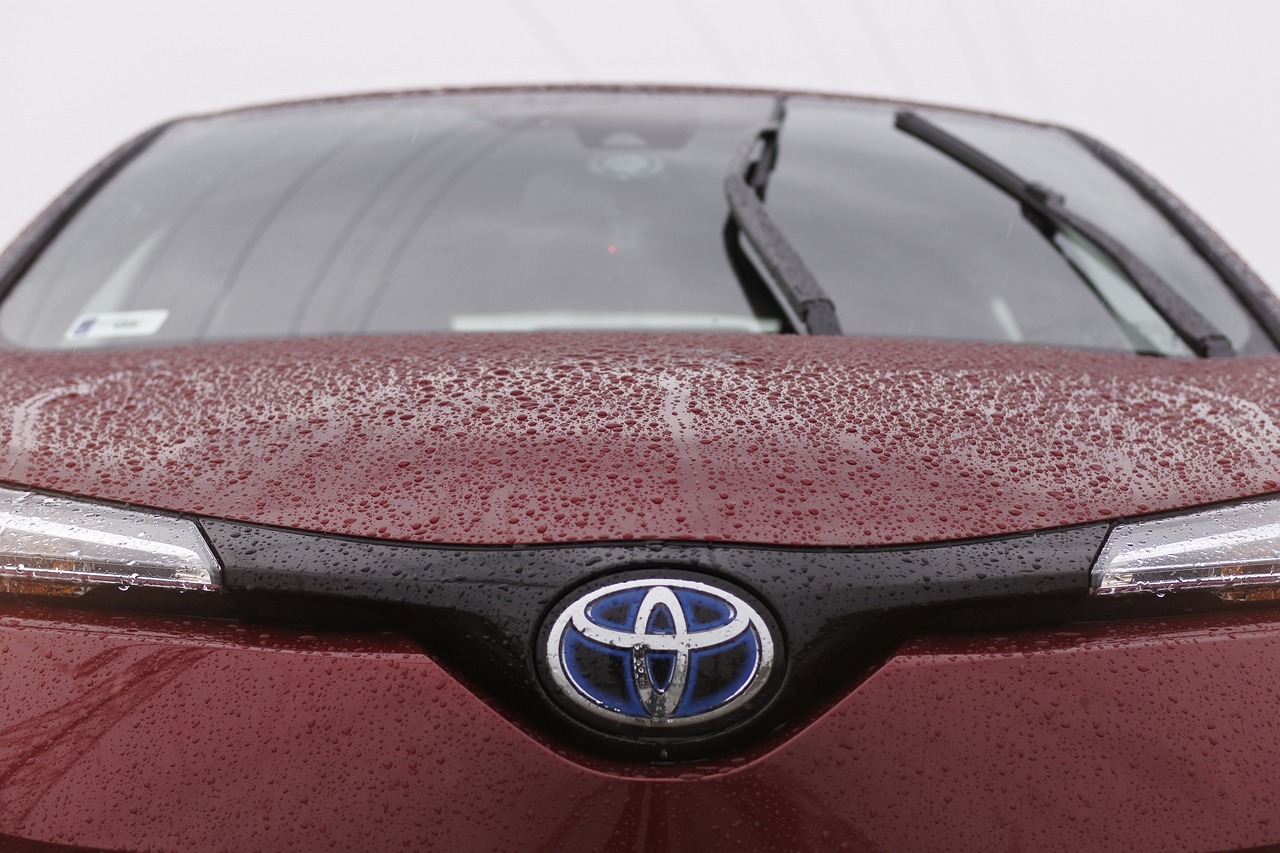How Does Hybrid Vehicle Technology Work?

- How Does Hybrid Vehicle Technology Work?
- Unveiling the Secrets of Hybrid Vehicle Technology
- Types of Hybrid Vehicles
- Series Hybrids
- Parallel Hybrids
- Plug-in Hybrids
- The Core Components of a Hybrid System
- The Internal Combustion Engine (ICE)
- The Electric Motor
- The Battery Pack
- Advantages of Hybrid Vehicles
- Fuel Efficiency
- Reduced Emissions
- Conclusion

Unveiling the Secrets of Hybrid Vehicle Technology
The automotive world is in constant flux, driven by the pursuit of efficiency and sustainability. At the forefront of this revolution is hybrid vehicle technology, a sophisticated approach to powering vehicles that combines the best of both worlds: the traditional internal combustion engine (ICE) and the innovative electric motor. This groundbreaking technology offers a compelling alternative to conventional gasoline-powered cars, promising improved fuel economy, reduced emissions, and a quieter driving experience. But how exactly does this intricate dance between two distinct power sources work? This article delves into the fascinating mechanics of hybrid vehicles, exploring the different types, their advantages, and the future of this transformative technology.

Types of Hybrid Vehicles
Series Hybrids
Series hybrid vehicles, also known as range-extended electric vehicles, primarily rely on the electric motor for propulsion. The ICE acts as a generator, charging the battery that powers the electric motor. This configuration offers a simpler design and can deliver high efficiency, especially in city driving. The ICE never directly powers the wheels, ensuring a smooth and quiet ride.
One of the key benefits of series hybrids is their ability to operate solely on electric power for extended periods, making them ideal for short commutes and urban environments. The range extender provides peace of mind for longer journeys, eliminating range anxiety associated with purely electric vehicles. However, series hybrids may be less efficient at higher speeds when the ICE is constantly running.
Examples of series hybrids include certain models that prioritize electric driving with a gasoline engine as backup.
Parallel Hybrids
Parallel hybrids offer a more direct interaction between the ICE and the electric motor. Both power sources can drive the wheels independently or simultaneously, depending on the driving conditions. This flexibility allows for optimized performance and efficiency across a wider range of speeds and driving scenarios.
The control system in a parallel hybrid constantly monitors factors like speed, acceleration, and battery charge to determine the optimal power split between the two sources. This complex interplay ensures efficient power delivery while minimizing fuel consumption and emissions.
Many popular hybrid models on the market today utilize a parallel hybrid configuration, offering a balance of performance and efficiency.
Plug-in Hybrids
Plug-in hybrid electric vehicles (PHEVs) combine the benefits of both series and parallel hybrids with the added advantage of a larger battery pack that can be charged from an external power source. This allows for extended all-electric range, often sufficient for daily commutes.
PHEVs offer the flexibility of electric driving for shorter trips while retaining the range and convenience of a gasoline engine for longer journeys. This makes them a compelling option for drivers seeking to reduce their reliance on fossil fuels without sacrificing practicality.
The ability to charge from the grid allows PHEV owners to take advantage of off-peak electricity rates, further reducing operating costs.
The Core Components of a Hybrid System
The Internal Combustion Engine (ICE)
In a hybrid vehicle, the ICE is typically smaller and more efficient than in a conventional gasoline-powered car. It is designed to operate at its optimal efficiency range, often supplementing the electric motor during periods of high power demand.
The ICE can also act as a generator, charging the battery in series hybrids or providing additional power in parallel hybrids. This versatility makes the ICE a crucial component of the hybrid system.
Modern hybrid vehicles often employ advanced engine technologies like variable valve timing and direct injection to further enhance efficiency.
The Electric Motor
The electric motor provides clean and silent power, particularly beneficial in city driving where frequent starts and stops are common. It can also assist the ICE during acceleration, providing extra boost and improving overall performance.
Electric motors are inherently more efficient than ICEs, especially at lower speeds. This makes them ideal for urban environments where stop-and-go traffic is prevalent.
In some hybrid configurations, the electric motor can also act as a generator during braking, capturing kinetic energy and converting it back into electricity to recharge the battery. This process, known as regenerative braking, further enhances the efficiency of the hybrid system.
The Battery Pack
The battery pack stores the electrical energy that powers the electric motor. In hybrid vehicles, the battery is typically smaller than in fully electric vehicles, as it is not the sole source of power.
Different battery chemistries are used in hybrid vehicles, each with its own advantages and disadvantages. Lithium-ion batteries are becoming increasingly common due to their high energy density and long lifespan.
The battery pack is a critical component of the hybrid system, and its size and capacity directly impact the vehicle’s all-electric range and overall performance.
Advantages of Hybrid Vehicles
Fuel Efficiency
Hybrid vehicles are known for their improved fuel economy compared to conventional gasoline-powered cars. By combining the strengths of both the ICE and the electric motor, hybrids can significantly reduce fuel consumption, especially in city driving.
The ability to recapture energy through regenerative braking further enhances fuel efficiency, making hybrids a cost-effective choice for budget-conscious drivers.
The fuel savings achieved with a hybrid vehicle can vary depending on driving habits and the specific model.
Reduced Emissions
Hybrids contribute to a cleaner environment by producing fewer emissions than traditional gasoline-powered vehicles. The use of an electric motor reduces reliance on the ICE, resulting in lower tailpipe emissions and a smaller carbon footprint.
The environmental benefits of hybrid vehicles are particularly significant in urban areas where air quality is often a concern.
As battery technology continues to improve, the environmental impact of hybrid vehicles is expected to further decrease.
Conclusion
Hybrid vehicle technology represents a significant step towards a more sustainable automotive future. By combining the strengths of both internal combustion engines and electric motors, hybrids offer a compelling blend of performance, efficiency, and environmental responsibility. As technology continues to advance, we can expect even greater improvements in fuel economy, reduced emissions, and enhanced driving experiences from hybrid vehicles. The future of transportation is undoubtedly electrifying, and hybrid technology is paving the way for a cleaner, greener tomorrow.
| Hybrid Type | Power Source | Advantages |
|---|---|---|
| Series | Electric Motor (ICE as generator) | Simple design, high city efficiency |
| Parallel | ICE and Electric Motor | Flexible power delivery, balanced performance |
| Plug-in | ICE and Electric Motor (larger battery) | Extended electric range, charging capability |
- Improved fuel economy
- Reduced emissions
- Quieter operation
What is a hybrid vehicle?
A hybrid vehicle is a type of vehicle that uses two or more distinct power sources to move the vehicle. The most common type of hybrid vehicle combines an internal combustion engine (ICE) with an electric motor.
What are the different types of hybrid vehicles?
The main types of hybrid vehicles are series hybrids, parallel hybrids, and plug-in hybrids. Each type has its own unique configuration and advantages.
How does regenerative braking work?
Regenerative braking captures kinetic energy during braking and converts it into electricity to recharge the battery, improving efficiency.
What are the benefits of driving a hybrid vehicle?
The key benefits of driving a hybrid vehicle include improved fuel economy, reduced emissions, and a quieter driving experience.


